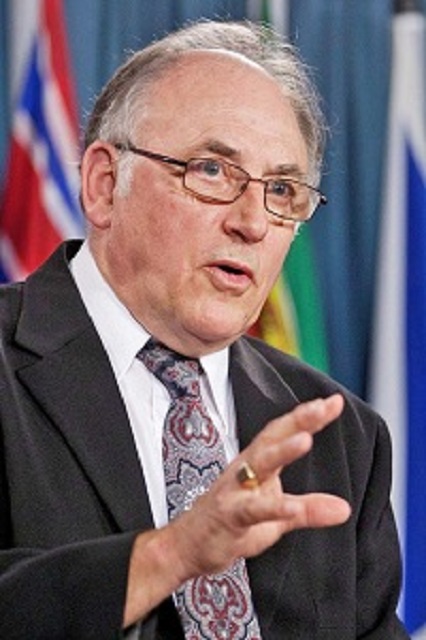National
8 reasons an Alberta MP says there will be a federal election this fall
Fraser Institute
Bill Maher is right about Canadian health care

From the Fraser Institute
Recently, popular American comedian and talk show host, Bill Maher, took aim at some of Canada’s public policy failings in one of his monologues. In entertaining fashion, Maher highlighted our high housing costs, unemployment rates and “vaunted” health-care system.
Indeed, citing work published by the Fraser Institute, he explained that after adjusting for age, Canada spends 13.3 per cent of our economy on health care (2020), the highest level of spending by a developed country with universal coverage that year. And that Canada has some of the poorest access to timely appointments with family doctors when compared to our peers.
Unfortunately, while that’s where his segment on health care ended, the bad news for the Canadian system doesn’t stop there.
On top of Canada continuing to be one of the most expensive universal health-care systems in the world, we get little in return when it comes to both available medical resources and wait times. For example, among high-income countries with universal health care, Canada has some of the lowest numbers of physicians, hospital beds, MRI machines and CT scanners.
And in Canada, only 38 per cent of patients report seeing a specialist within four weeks (compared to 69 per cent in the Netherlands) and only 62 per cent report receiving non-emergency surgery within four months (compared to 99 per cent in Germany).
Unfortunately, wait times in Canada aren’t simply long compared to other countries, they’re the longest they’ve ever been. Last year the median wait for a Canadian patient seeking non-emergency care reached 27.7 weeks—nearly three times longer than the 9.3 week-wait Canadians experienced three decades ago.
This raises the obvious question. How do other countries outperform Canada’s health-care system while also often spending less as a share of their economies? In short, their approach to universal health care, and in particular their relationship with the private sector, departs drastically from the approach here at home.
Australia, for example, partners with private hospitals to deliver the majority (58.6 per cent) of all non-emergency surgeries within its universal health-care system. Australia also spends less of its total economy (i.e. GDP) on health care but outperforms Canada on every measure of timely care.
Even with restrictions on the private sector, Canada has some limited experience that should encourage policymakers to embrace greater private-sector involvement. Saskatchewan, for example, contracted with private surgical clinics starting in 2010 to deliver publicly-funded services as part of a four-year initiative to reduce wait times, which were among the longest in the country. Between 2010 and 2014, wait times in the province fell from 26.5 weeks to 14.2 weeks. After the initiative ended, the province’s wait times began to grow.

More recently, Quebec, which has some of the shortest wait times for medical services in the country, contracts out one out of every six day-surgeries to private clinics within the publicly-funded health-care system.
Maher’s monologue, which was viewed by millions online, highlighted the key failings of Canada’s health-care system. If policymakers in Ottawa and the provinces want to fix Canadian health care, they must learn from other countries that deliver universal health-care at the same or even lower cost, often with better access and results for patients.
Author:
Business
Federal government’s ‘fudget budget’ relies on fanciful assumptions of productivity growth

From the Fraser Institute
By Niels Veldhuis and Jake Fuss
Labour productivity isn’t growing, it’s declining. And stretching the analysis over the Trudeau government’s time in office (2015 to 2023, omitting 2020 due to COVID), labour productivity has declined by an average of 0.8 per cent. How can the Trudeau government, then, base the entirety of its budget plan on strong labour productivity growth?
As the federal budget swells to a staggering half a trillion dollars in annual spending—yes, you read that correctly, a whopping $538 billion this year or roughly $13,233 per Canadian—and stretches over 430 pages, it’s become a formidable task for the media to dissect and evaluate. While it’s easy to spot individual initiatives (e.g. the economically damaging capital gains tax increase) and offer commentary, the sheer scale and complexity of the budget make it hard to properly evaluate. Not surprisingly, most post-budget analysts missed a critically important assumption that underlies every number in the budget—the Liberals’ assumption of productivity growth.
Indeed, Canada is suffering a productivity growth crisis. “Canada has seen no productivity growth in recent years,” said Carolyn Rogers, senior deputy governor at the Bank of Canada, in a recent speech. “You’ve seen those signs that say, ‘In emergency, break glass.’ Well, it’s time to break the glass.”
The media widely covered this stark warning, which should have served as a wake-up call, urging the Trudeau government to take immediate action. At the very least, this budget’s ability—or more accurately, inability—to increase productivity growth should have been a core focus of every budget analysis.
Of course, the word “productivity” puts most people, except die-hard economists, to sleep. Or worse, prompts the “You just want us to work harder?” questions. As Rogers noted though, “Increasing productivity means finding ways for people to create more value during the time they’re at work. This is a goal to aim for, not something to fear. When a company increases productivity, that means more revenue, which allows the company to pay higher wages to its workers.”
Clearly, labour productivity growth remains critical to our standard of living and, for governments, ultimately determines the economic growth levels on which they base their revenue assumptions. With $538 billion in spending planned for this year, the Trudeau government better hope it gets its forecasts right. Otherwise, the $39.8 billion deficit they expect this year could be significantly higher.
And here’s the rub. Buried deep in its 430-page budget is the Trudeau government’s assumption about labour productivity growth (page 385, to be exact). You see, the Liberals assume the economy will grow at an average of 1.8 per cent over the next five years (2024-2028) and predict that half that growth will come from the increase in the supply of labour (i.e. population growth) and half will come from labour productivity growth.
However, as the Bank of Canada has noted, labour productivity growth has been non-existent in Canada. The Bank uses data from Statistics Canada to highlight the country’s productivity, and as StatsCan puts it, “On average, over 2023, labour productivity of Canadian businesses fell 1.8 per cent, a third consecutive annual decline.”
In other words, labour productivity isn’t growing, it’s declining. And stretching the analysis over the Trudeau government’s time in office (2015 to 2023, omitting 2020 due to COVID), labour productivity has declined by an average of 0.8 per cent. How can the Trudeau government, then, base the entirety of its budget plan on strong labour productivity growth? It’s what we call a “fudget budget”—make up the numbers to make it work.
The Trudeau fudget budget notwithstanding, how can we increase productivity growth in Canada?
According to the Bank of Canada, “When you compare Canada’s recent productivity record with that of other countries, what really sticks out is how much we lag on investment in machinery, equipment and, importantly, intellectual property.”
Put simply, to increase productivity we need businesses to increase investment. From 2014 to 2022, Canada’s inflation-adjusted business investment per worker (excluding residential construction) declined 18.5 per cent from $20,264 to $16,515. This is a concerning trend considering the vital role investment plays in improving economic output and living standards for Canadians.
But the budget actually hurts—not helps—Canada’s investment climate. By increasing taxes on capital gains, the government will deter investment in the country and encourage a greater outflow of capital. Moreover, the budget forecasts deficits for at least five years, which increases the likelihood of future tax hikes and creates more uncertainty for entrepreneurs, investors and businesses. Such an unpredictable business environment will make it harder to attract investment to Canada.
This year’s federal budget rests on fanciful assumptions about productivity growth while actively deterring the very investment Canada needs to increase living standards for Canadians. That’s a far cry from what any reasonable person would call a successful strategy.
Authors:
-

 Housing2 days ago
Housing2 days agoTrudeau’s 2024 budget could drive out investment as housing bubble continues
-

 Alberta2 days ago
Alberta2 days agoAlberta government should create flat 8% personal and business income tax rate in Alberta
-

 National2 days ago
National2 days agoLow and middle income Canadians hit hardest by high marginal effective tax rates
-

 Energy2 days ago
Energy2 days agoA Wealth-Creating Way of Reducing Global CO2 Emissions
-

 conflict2 days ago
conflict2 days agoCol. Douglas Macgregor: US is ‘facing disaster’ as it funds overseas wars while bankrupt
-

 Censorship Industrial Complex1 day ago
Censorship Industrial Complex1 day agoDesperate Liberals move to stop MPs from calling Trudeau ‘corrupt’
-

 COVID-191 day ago
COVID-191 day agoInquiry shows Canadian gov’t agencies have spent $10 million on social media ads for COVID jabs
-

 Business1 day ago
Business1 day agoFederal government’s ‘fudget budget’ relies on fanciful assumptions of productivity growth











